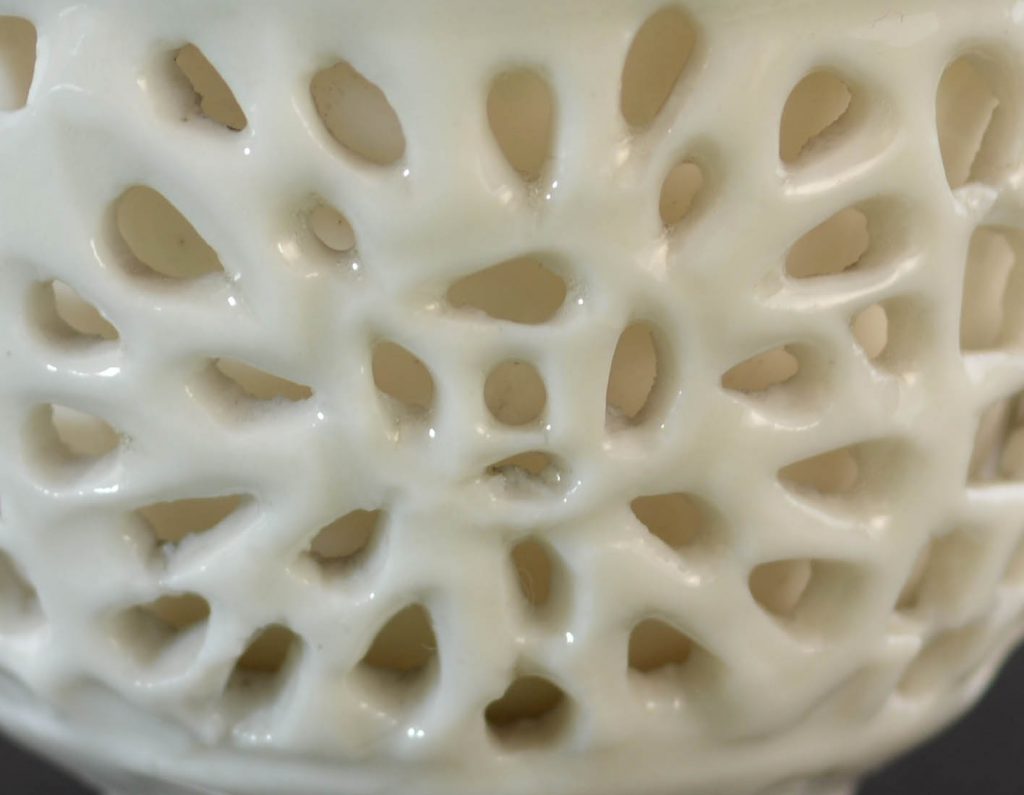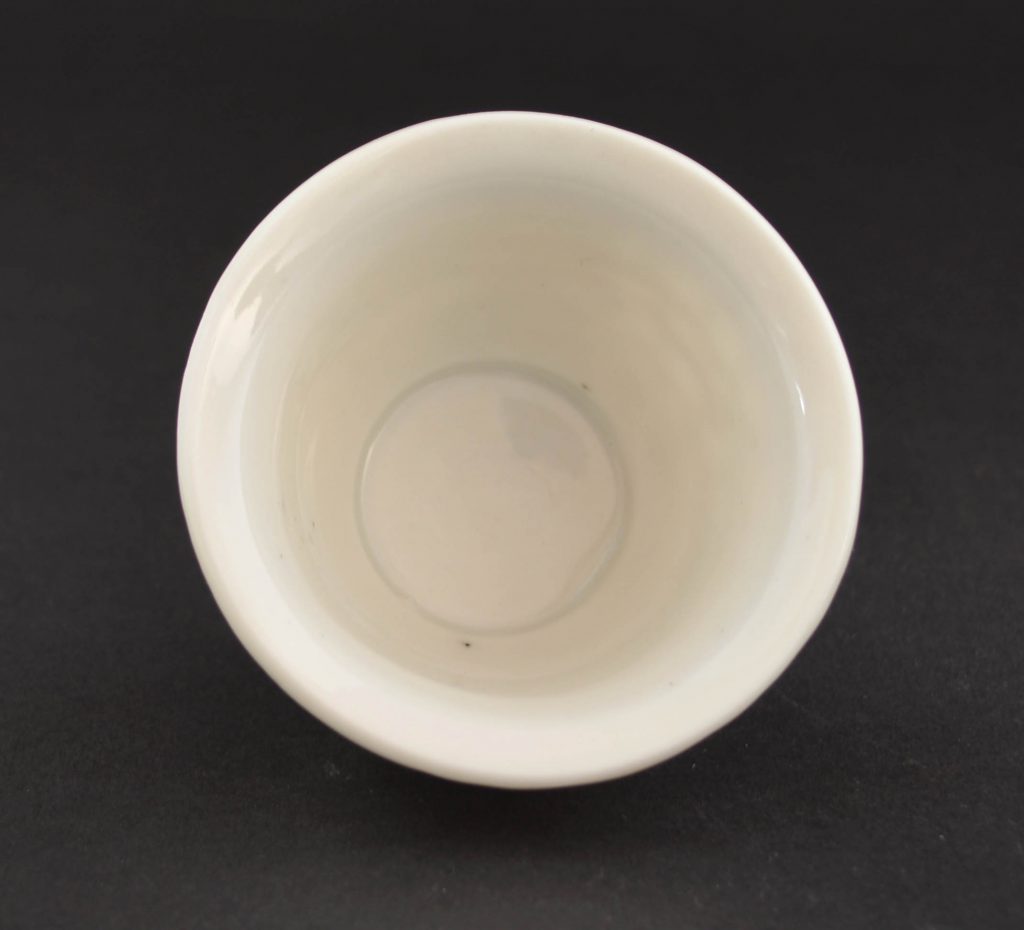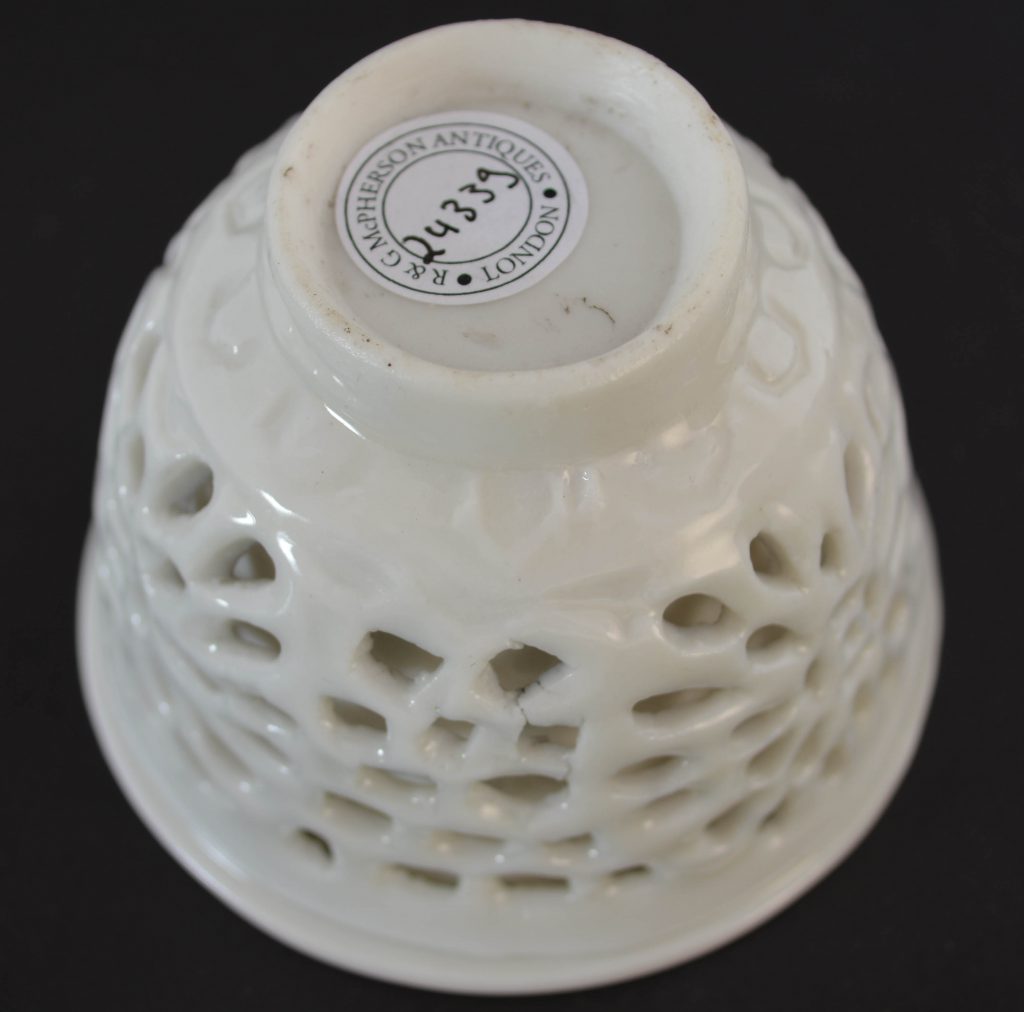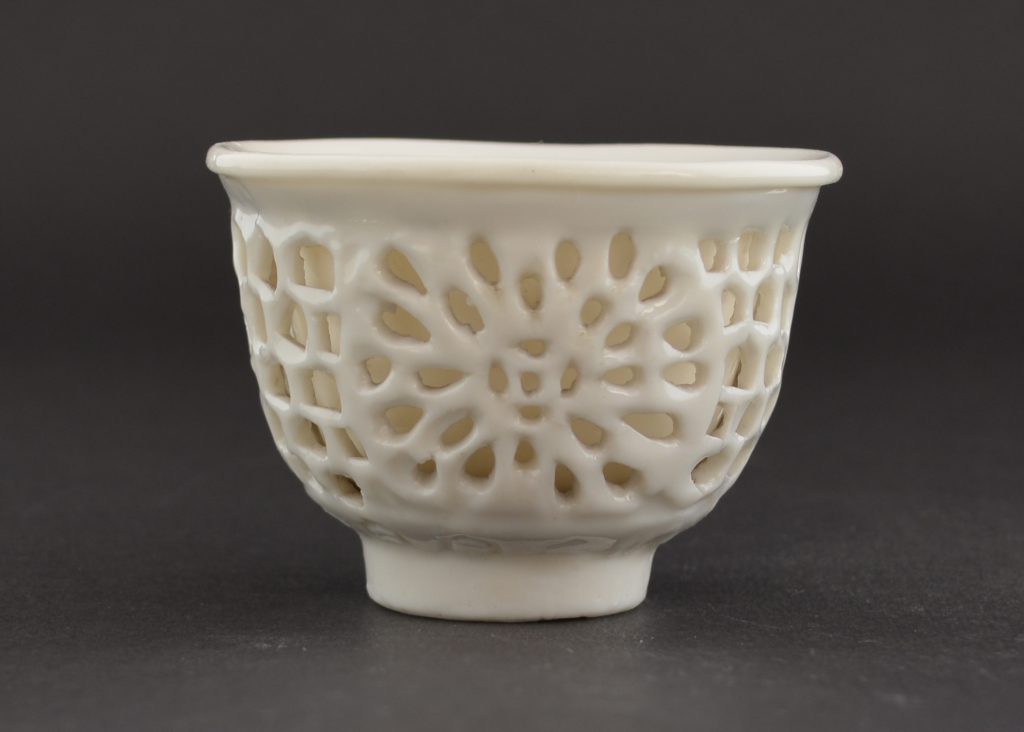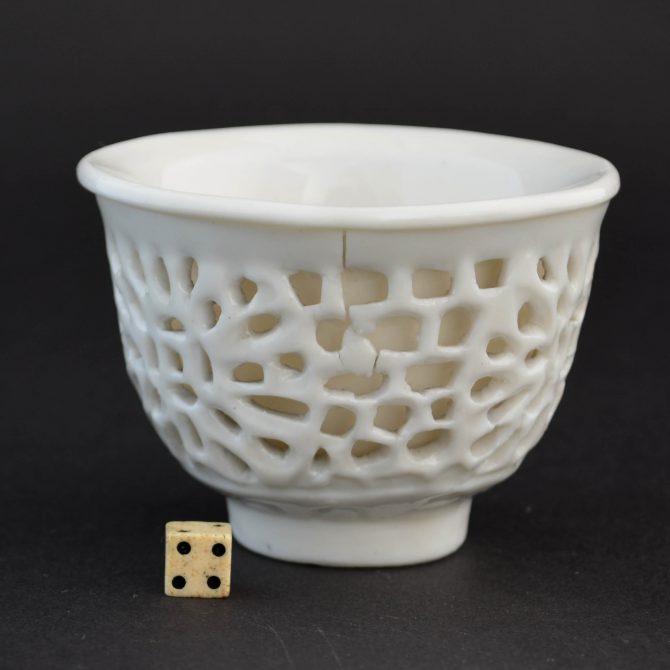
CHONGZHEN, SHUNZHI or KANGXI c.1640 – 1700 Blanc de Chine Porcelain
A 17th Century Blanc de Chine Linglong (Reticulated) Cup from the Dehua Kilns, Fujian Province. Transitional Period, Late Ming or Early Qing Dynasty, Chongzhen (1628-1644), Shunzhi (1644-1661) or Kangxi Period (1662-1722). The Outer Wall of this Blanc de Chine Porcelain Cup is Moulded and then Sections Cut Through, the Inner Wall of the Beaker is then Added. The Join can Clearly Been Seen Between the Inner and Outer Walls at the Top of the Cup. The Base is Unglazed and the Bowl is Supported by a High Foot.
SOLD
- Condition
- No damage except firing faults to the pierced outer layer where there was tension between the inner and outer wall as the bowl was being fired.
- Size
- Diameter : 7.6 cm (3 inches)
- Provenance
- N/A
- Stock number
- 24339
- References
- For a similar Blanc de Chine Porcelain cup see : Blanc de Chine (P.J. Donnelly, Faber and Faber, 1969 (ISBN 571-08078-2) plate 30b dated to c.1700-1750. For a further example, dated to c.1640, see : Exhibition of Blanc de Chine (S.Marchant & Son, Kensington Church Street, London.1985) page 36 plate 83.
Information
I have dated this bowl to include the first part of the Kangxi period. This gives a broader date range than normal because I feel it could be later than mid-17th century as it is slightly different to other example and the Linglong design can be found on Kangxi Famille Verte as well as Blue and White Porcelain.
Blanc de Chine Porcelain :
The porcelain known in the West as Blanc de Chine was produced 300 miles south of the main Chinese kiln complex of Jingdezhen. The term refers to the fine grain white porcelain made at the kilns situated near Dehua in the coastal province of Fujian, these kilns also produced other types of porcelain. A rather freely painted blue and white ware, porcelain with brightly coloured `Swatow` type enamels as well as pieces with a brown iron-rich glaze. However it is the white blanc de Chine wares that have made these kilns famous. The quality and colour achieved by the Dehua potters was partly due to the local porcelain stone, it was unusually pure and was used without kaolin being added. This, combined with a low iron content and other chemical factors within the body as well as the glaze, enabled the potters to produce superb ivory-white porcelain.
Linglong / Reticulated Porcelain :
The present piece is an example of what can be referred to as `reticulated` porcelain, reticulated meaning having the form or appearance of a net, it was used as early the beginning of the 18th Century by the famous Père Francois Xavier d`Entrecolles (1664-1741) to describe this type of work on porcelain. Another popular term for this type of pierced or cut decoration is `Devils Work` or Guigong. However the Chinese term Linglong is gradually replacing the previous terms, helped by the publication of Jorge Welsh`s book `Linglong` (Jorge Welsh,London,2004.ISBN 972-99045-2-9). There does not seem to be any difference in the use of terms between the free standing pierced porcelain or that supported by an inner wall, nor a distinction made between the most refined work or the type with larger cut-out sections of porcelain.
